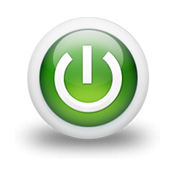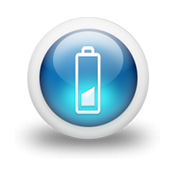In a disaster survival situation you are going to need some type of emergency power supply. That could simply mean batteries for your flashlights, radios and other essential electronics, or a generator to supply light and heat for your shelter. In the short-term emergency situation, the traditional electrical grid might be up and running. This category of emergency supplies can be overwhelming, so we definitely wanted to include it in our guide to assist preppers and survivalists in accessing the best options.
But if you plan your family’s survival on hoping and wishing, good luck, because you are going to need it. The bottom line is, whether you are planning for a 72 hour bug out bag or stocking up a survival shelter for a long-term emergency ride-out situation, you are going to need some type of emergency power supply. All of your power needs will fall into 3 major categories – emergency generators, batteries and solar power.
You also need to understand what kind of power outlets your generator comes equipped with. Are they all 110? Is a 220 outlet included? How much fuel does the gas tank hold, and how long will your emergency generator provide power on a full tank? These are the things you should know before purchasing a generator for your family’s disaster survival plan. Our Emergency Generator Guide will assist you in exploring your options. You should have a minimum of several flashlights and a couple of radios to help you last a short term disaster situation. If you are planning for a longer period of emergency survival, you are going to need plenty of emergency batteries for things like radios and flashlights. But don’t forget batteries for your hearing aids, cell phone, laptop, portable CBs, walkie-talkies, handheld games for the kids and countless other electronics. Emergency solar powered items include solar generators, solar powered batteries, foldable and portable solar panels and a host of other efficient and clean power-producing products. There are even solar backpacks which allow you to charge handheld devices and other small electrically powered items while you are on the move. There are also solar power kits, plans and manuals which allow you to create your own sun-harnessing power supplies, and they are conveniently available for online purchase. To run a quartz halogen work light, you are going to need about 300 running watts. Depending on the model, a space heater will draw about 1,800 watts. A 1/4 hp air compressor needs 970 watts to run, with an additional 1,600 for start up. You have to know what you are going to be running to understand what size emergency generator your family is going to need. Some items, like air compressors, need more wattage just to get cranked up and running, then they cycle back down to a lower draw.
To run a quartz halogen work light, you are going to need about 300 running watts. Depending on the model, a space heater will draw about 1,800 watts. A 1/4 hp air compressor needs 970 watts to run, with an additional 1,600 for start up. You have to know what you are going to be running to understand what size emergency generator your family is going to need. Some items, like air compressors, need more wattage just to get cranked up and running, then they cycle back down to a lower draw. Having an emergency generator immediately makes you more prepared for a disaster situation than 99% of the population. But lugging around a generator is probably going to be logistically difficult, if not impossible, in a survival scenario. This means you are absolutely going to need an emergency battery supply. And that should consist of mobile and stationary battery storage. You need batteries at your shelter, as well as on your person. This ensures that no matter where you get caught when you need light or power, you are good to go.
Having an emergency generator immediately makes you more prepared for a disaster situation than 99% of the population. But lugging around a generator is probably going to be logistically difficult, if not impossible, in a survival scenario. This means you are absolutely going to need an emergency battery supply. And that should consist of mobile and stationary battery storage. You need batteries at your shelter, as well as on your person. This ensures that no matter where you get caught when you need light or power, you are good to go. In the past couple of decades, solar power has become much more commonplace. It is an extremely clean and environmentally friendly way of producing power, and not nearly as expensive as when this was a new technology. As long as you have access to a few hours of sunlight each day, your emergency solar power system can turn the sun’s rays into electricity and then store it for later use.
In the past couple of decades, solar power has become much more commonplace. It is an extremely clean and environmentally friendly way of producing power, and not nearly as expensive as when this was a new technology. As long as you have access to a few hours of sunlight each day, your emergency solar power system can turn the sun’s rays into electricity and then store it for later use.
You are not signed in. Sign in to post comments.